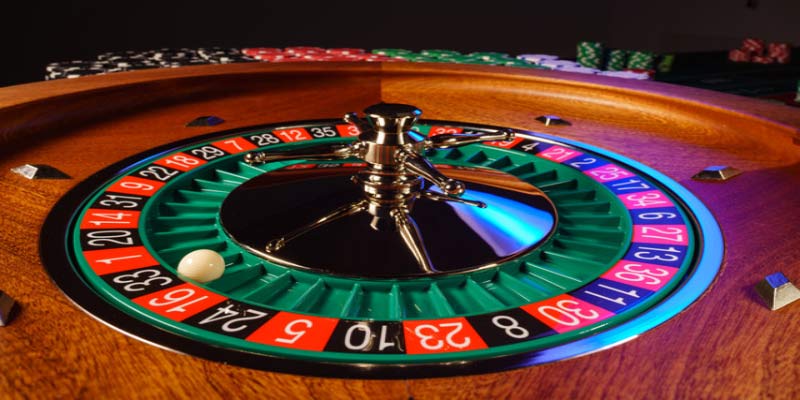Roulette Wheel – The Spinning Icon of Casino Thrills

Roulette Wheel – The Spinning Icon of Casino Thrills
The roulette wheel is a timeless symbol of chance and excitement, captivating players in casinos around the world. With its spinning motion, colorful layout, and the clatter of the ball settling into a pocket, the roulette wheel creates an unmatched atmosphere of anticipation. But what lies behind this iconic game piece? Let’s explore its history, mechanics, and tips to enhance your experience with the roulette.
The Origins of the Roulette Wheel
The roulette traces its roots back to 17th-century France, credited to mathematician Blaise Pascal. While experimenting with perpetual motion, Pascal unintentionally laid the groundwork for what would become a gambling sensation. By the 18th century, the modern roulette wheel emerged, refined by French brothers François and Louis Blanc. They introduced the single-zero design in 1843, giving players better odds and cementing its popularity in Europe.
Across the Atlantic, the American version of the roulette wheel added a double-zero pocket, increasing the house edge. Today, both styles—European (37 pockets) and American (38 pockets)—coexist, each offering a distinct flavor of this classic game. The roulette evolution reflects its adaptability and enduring appeal.
How the Roulette Wheel Works
At its core, the roulette is a marvel of design and randomness. It consists of a spinning disk with numbered pockets (0-36 in European, plus 00 in American), alternating between red and black, except for the green zero(s). A croupier spins the wheel in one direction and releases a small ball in the opposite direction along a tilted rim. As the wheel slows, the ball bounces and lands in a pocket, determining the winning number.
The layout of the roulette isn’t sequential—numbers are deliberately scrambled to ensure unpredictability. This randomness, combined with the physics of the spin, makes every outcome independent. Whether you’re betting on a single number, a color, or a range, the roulette keeps the game thrillingly impartial.
Types of Bets on the Roulette Wheel
The roulette versatility shines through its betting options, which cater to both cautious and bold players. Inside bets focus on specific numbers or small groups, offering higher payouts but lower odds. Examples include a “straight” bet (one number, 35:1 payout) or a “split” (two adjacent numbers, 17:1). Outside bets, like red/black or odd/even, cover broader categories with nearly 50/50 chances and smaller rewards (1:1).
Special bets like the “French bets” (e.g., Voisins du Zéro) are unique to European roulette, covering sections of the wheel rather than the table layout. Understanding these options lets you tailor your strategy to the roulette wheel’s unpredictable nature.
Why the Roulette Wheel Fascinates Players
Few casino games match the roulette blend of simplicity and drama. No skill is required—just place your chips and watch the wheel decide your fate. Yet, it’s this lack of control that fuels its allure. The visual spectacle of the spinning roulette wheel, paired with the suspense of the ball’s final resting place, creates a visceral thrill that keeps players coming back.
Beyond the mechanics, the roulette carries a cultural mystique. It’s starred in countless films and novels as a symbol of risk and reward, from Monte Carlo’s glamour to Las Vegas’s glitz. Whether you’re chasing a big win or savoring the moment, the roulette wheel delivers an unforgettable experience.
Tips for Playing the Roulette Wheel
While the roulette is a game of chance, a few strategies can enhance your enjoyment and manage your risks:
-
Choose European Wheels: With only one zero, the European roulette wheel has a lower house edge (2.7%) compared to the American version (5.26%), giving you better odds.
-
Set a Budget: Decide your spending limit before playing. The fast pace of the roulette wheel can tempt overspending if you’re not disciplined.
-
Mix Bet Types: Combine inside and outside bets to balance risk and reward. For example, pair a small straight bet with a safer red/black wager.
-
Avoid “Systems”: No betting pattern (like Martingale) can overcome the roulette wheel’s randomness—play for fun, not a guaranteed profit.
The Roulette Wheel in the Digital Era
The rise of online casinos has brought the roulette into the digital realm, making it accessible anytime, anywhere. Virtual roulette wheels use Random Number Generators (RNGs) to mimic the physical spin, ensuring fair outcomes. Many platforms also offer live dealer games, streaming real roulette wheels spun by human croupiers for an authentic feel.
Online versions often include features like customizable layouts, detailed statistics, and free-play modes, letting you practice without stakes. This evolution keeps the roulette relevant, blending tradition with modern convenience.
Conclusion
The roulette wheel is more than a gambling tool—it’s a captivating blend of history, design, and pure chance. From its French origins to its digital adaptations, it remains a cornerstone of casino culture, drawing players with its elegant simplicity and heart-pounding suspense. Whether you’re at a lavish table or spinning a virtual roulette wheel, the game offers endless excitement. Ready to take a chance? Step up to the wheel and let the spin decide your fortune!




